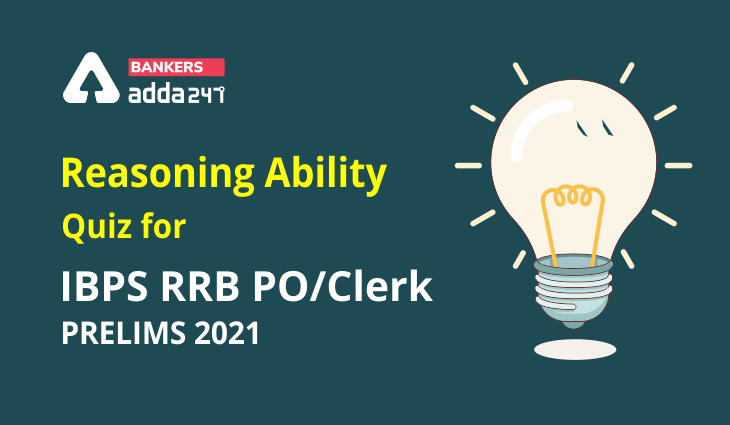Table of Contents
Direction (1-5): In each of the questions below are given some statements followed by some conclusions. You have to take the given statements to be true even if they seem to be at variance with commonly known facts. Read all the conclusions and then decide which of the given conclusions logically follows from the given statements disregarding commonly known facts.
(a) If only conclusion I follows.
(b) If only conclusion II follows.
(c) If either conclusion I or II follows.
(d) If neither conclusion I nor II follows.
(e) If both conclusions I and II follow.
Q1. Statements: P > Y ≤ H ≥ U > T = N
Conclusions: I. P > U II. N < H
Q2. Statements: A ≥ S > D = C ≥ V > F > G ≥ H
Conclusions: I. V < D II. H ≤ V
Q3. Statements: F > G ≥ T ≥ H > Y, T ≤ L = J < K
Conclusions: I. J > H II. J = H
Q4. Statements: B > N ≥ M = K > L, W ≤ E = B, Q ≥ W > A
Conclusions: I. W > M II. Q ≤ K
Q5. Statements: C > V = B > N ≥ M, K ≤ L = O ≤ P < V
Conclusions: I. O < C II. B > L
Direction (6-10): In each of the questions below are given some statements followed by two conclusions. You have to take the given statements to be true even if they seem to be at variance with commonly known facts. Read all the conclusions and then decide which of the given conclusions logically follows from the given statements disregarding commonly known facts.
(a) If only conclusion I follows.
(b) If only conclusion II follows.
(c) If either conclusion I or II follows.
(d) If neither conclusion I nor II follows.
(e) If both conclusions I and II follow.
Q6. Statements: P>S≥T; T>Q<R; R=N
Conclusion I: P>N II: R≥S
Q7. Statements: A>B<C=D≥E≥ G<F
Conclusion I: B>F II: C≥G
Q8. Statements: J>K=L; L>N>M; M<A
Conclusion I: J>M II: A>J
Q9. Statements: B=Y≥X>V; V<K>Q; Q=C
Conclusion I: B>V II: C≤X
Q10. Statements: Z>V<N=M≥E≥B<C
Conclusion I: B>V II: Z≥E
Direction (11-15): In each of the questions below are given some statements followed by some conclusions. You have to take the given statements to be true even if they seem to be at variance with commonly known facts. Read all the conclusions and then decide which of the given conclusions logically follows from the given statements disregarding commonly known facts.
(a) If only conclusion I follows.
(b) If only conclusion II follows.
(c) If either conclusion I or II follows.
(d) If neither conclusion I nor II follows.
(e) If both conclusions I and II follow.
Q11. Statements: P ≥H >T= Y >Q ≤N >E <F
Conclusions: I. P > N II. F< H
Q12. Statements: Z ≥S >N = C ≥ V; V>J >L ≥ H
Conclusions: I. L< N II. H ≤ V
Q13. Statements: F > S > T ≥ H > D; F ≤ L = J < G
Conclusions: I. J > H II. S < G
Q14. Statements: M > N ≥ R = T > L; M ≤ E < B; L < W > A
Conclusions: I. E > T II. A ≤ M
Q15. Statements: M > K = L> N ≥ A; M ≤ L = O ≤ P < V
Conclusions: I. N < P II. M ≤P
Practice More Questions of Reasoning for Competitive Exams:
Solutions
S1. Ans. (b)
Sol. I. P > U (False) II. N < H (True)
S2. Ans. (d)
Sol. I. V < D (False) II. H ≤ V (False)
S3. Ans. (c)
Sol. I. J > H (False) II. J = H (False)
S4. Ans. (d)
Sol. I. W > M (False) II. Q ≤ K (False)
S5. Ans. (e)
Sol. I. O < C (True) II. B > L (True)
S6. Ans. (d)
Sol. I: P>N (False) II: R≥S (False)
S7. Ans. (b)
Sol. I: B>F (False) II: C≥G (True)
S8. Ans. (a)
Sol. I: J>M (True) II: A>J(False)
S9. Ans. (a)
Sol. I: B>V (True) II: C≤X (False)
S10. Ans. (d)
Sol. I: B>V (False) II: Z≥E(False)
S11. Ans. (d)
Sol. I. P >N(False) II. F <H(False)
S12. Ans. (a)
Sol. I. L <N(True) II. H ≤ V(False)
S13. Ans. (e)
Sol. I. J >H(True) II. S <G(True)
S14. Ans. (a)
Sol. I. E >T(True) II. A ≤ M(False)
S15. Ans. (e)
Sol. I. N <P(True) II. M ≤ P(True)
Click Here to Register for Bank Exams 2021 Preparation Material





 GA Capsule for SBI Clerk Mains 2025, Dow...
GA Capsule for SBI Clerk Mains 2025, Dow...
 The Hindu Review October 2022: Download ...
The Hindu Review October 2022: Download ...
 NICL Assistant Mains Cut Off 2025 Out, C...
NICL Assistant Mains Cut Off 2025 Out, C...







